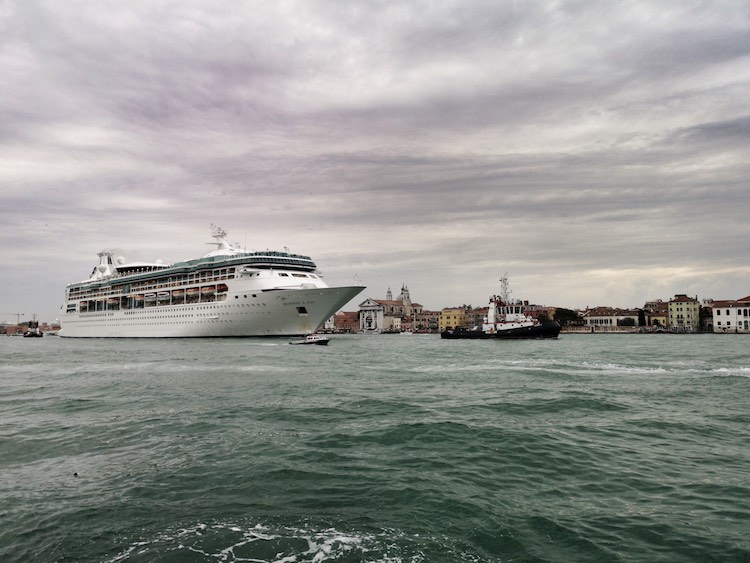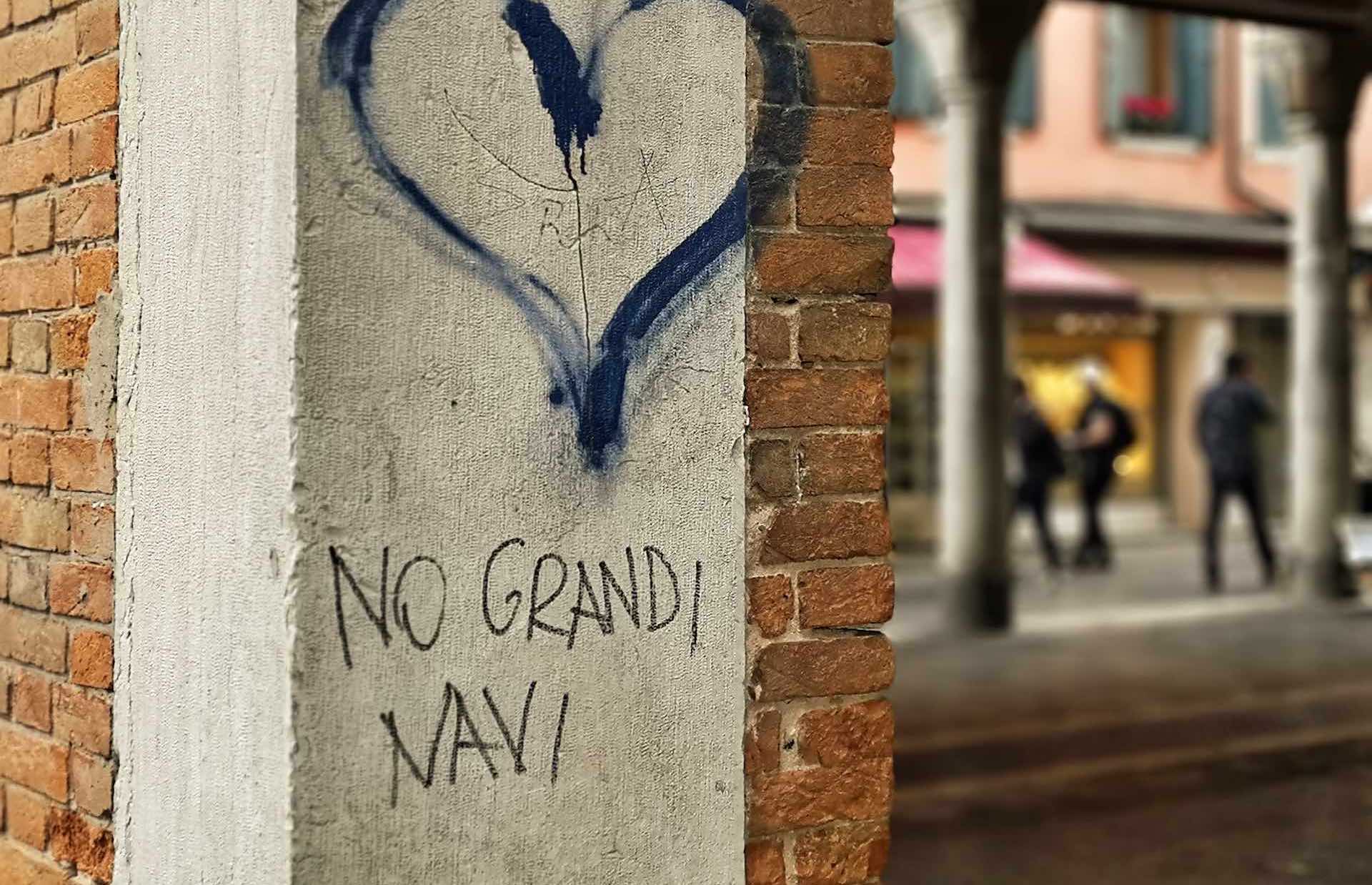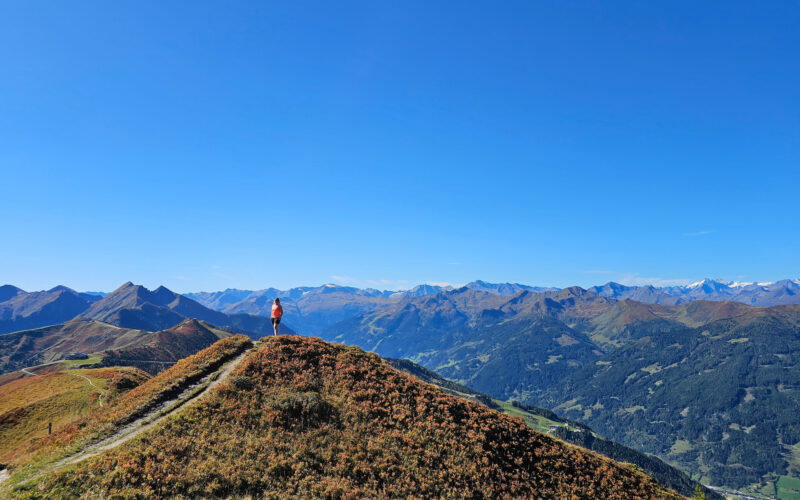Overtourism—that is, too much tourism concentrated in a single spot—is on everyone's lips. Since 2017, there have been repeated reports in the media about the problems caused by mass tourism. In Barcelona and Venice in particular, residents are protesting more and more vehemently against the sellout of their city and the loss of their home.
Cruise ships are a major problem in this context. For many years, these giants of the sea have been sailing into the small lagoon city via the Giudecca Canal, flooding the city with day tourists.
The reason I am writing about Venice and cruise ships is actually thanks to my brother. At the end of October, we spent a wonderful family weekend in the lagoon city. And on our second day of vacation, while trying to capture the sunrise in Dorsoduro, we saw a cruise ship slowly making its way past St. Mark's Square into the Giudecca Canal.
I detest cruise ships. I detest them from the bottom of my heart, even though I've never been on one. I don't understand why people pay so much money to lock themselves up in a floating Disneyland prison and be filled with exhaust fumes. And I understand even less why these sea monsters are allowed to come so close to a small, fragile city like Venice – ships that are sometimes taller than the city's highest campanile.
And I expressed this opinion from the bottom of my heart.
And my brother said, “The Venetians have only themselves to blame—they allowed these ships, and now they're complaining.”
Well, as someone who really doesn't like to change their mind, I was quite shocked, I must say. However, I quickly realized that my argument was weak because I simply didn't have any solid knowledge on the subject. So I immersed myself in research and would like to summarize here the problems that cruise ships cause Venice and what the future holds.

Problem number 1: Impact on sensitive foundations
Venice is sinking. On the one hand, this is due to natural causes, but on the other hand, the strong waves caused by heavy ships are also contributing significantly to this phenomenon. Researcher Luigi Tosi, a geologist at the ISMAR-CNR research institute in Venice, observed that the greatest damage occurs in areas with the heaviest ship traffic..
Motorboats are of course no exception, but one can imagine that the waves of a vaporetto look like toys compared to the waves of a giant cruise ship.
Problem number 2: Impact on the entire lagoon
Here, too, strong waves play a problematic role. In recent decades, the lagoon has deepened by more than a meter. This has had a massive impact on the dynamics of the water, endangering not only the city but also the entire biodiversity.
Problem number 3: Air pollution
“How can you allow yourself to be confined to a ship where the air is so polluted?” I ask myself.
“Why do we allow ships that pollute our air to enter our city?” ask the Venetians.
There are many figures that compare cruise ships with cars and produce appalling results. However, it is difficult to make such comparisons. This is because a cruise ship travels many hundreds of kilometers per day, while the average German car only travels 36 kilometers. And while a car transports an average of one to two people, a cruise ship transports several thousand.
Nevertheless, the fact remains that cruise ships are terrible polluters of the air, emitting everything from fine dust to gases that are harmful to health and affect the climate. In 2016, 529 cruise ships docked in the port of Venice. It is easy to imagine that this has consequences for air quality.
Problem number 4: Cruise tourists bring in very little money
When 529 cruise ships brought 1.6 million tourists to Venice in 2016, it sounds like high revenues for the lagoon city. Unfortunately, that is not the case. Cruise tourists do not stay overnight and hardly ever dine in the city.
Cruise lines naturally see things differently. Of course, it is difficult to determine how much money a cruise tourist actually spends, but it is clear that it is significantly less than a hotel guest.
Problem number 5: Cruise ships bring in less than they cost
The millions of euros that cruise ships bring to Venice exceed the maintenance costs, according to shipping companies and politicians.
Countless environmental and material damage cannot be estimated,according to researchers and environmental activists.
Furthermore, the Venetians, inundated with day tourists, do not benefit at all from the money paid by the shipping companies.
What has happened so far?
2012 it was decided that cruise ships over 40,000 tons would no longer be allowed to enter the lagoon once an alternative channel had been built. This decision was revoked because it “threatened economic interests,” and because no alternative route had been found.
2015 , ships over 96,000 tons were prohibited from entering the lagoon.
2016 , UNESCO threatened to revoke Venice's status as a World Heritage Site or place it on the list of endangered cultural properties if no measures were taken against overtourism. However, this was called off again in 2017.
In 2017 , a referendum was held, initiated by the No Grandi Navi initiative, in which nearly 20,000 people voted on cruise ships. Over 98% voted in favor of banning the giant ships from entering the lagoon city.
Politicians did not consider the vote binding, as not only Venetians but also residents from the surrounding area had cast their votes.
What happens next?
A new regulation was passed at the end of 2017. From 2020, ships over 55,000 tons will no longer be allowed to enter the lagoon city, but will have to dock in Marghera, an industrial port. A separate pier is being built for this purpose, but it will not be completed by 2020, meaning that the change will likely take place gradually rather than all at once in 2020. For smaller ships, an existing canal will be rebuilt (deepened by several meters).
Environmentalists from “No Grandi Navi” continue to protest against these plans because they stipulate that ships weighing more than 96,000 tons, which are actually banned from the lagoon, will also be allowed to sail through it after Marghera. And it is precisely these ships that cause the most damage to the seabed.

Update 2025
A few years later, I am revising this blog post and would like to give you an update on how things have progressed.
Since August 1, 2021, a ban imposed by the Italian government has been in effect, prohibiting cruise ships with a gross tonnage of more than 25 000 BRZ, a length over 180 m or a height of over 35 m from sailing through the historic center of the lagoon, in particular through the Canale della Giudecca, the Bacino di San Marco, and the Canale di San Marco.
There is still no completed terminal for cruise ships in Marghera, only temporary ones.
- In April 2025, approximately 10 hectares of land along the North Canal were purchased by the port authority to build a permanent cruise terminal. At the same time, work began on expanding the power supply, allowing ships to shut down their engines while docked and connect to the shore power grid (to reduce environmental impact).
- At the same time, the transport infrastructure in the Porto Marghera area is being expanded. As of July 2025, around 60% of the road and rail connections have already been completed, with the project scheduled for completion at the end of 2025 and testing to be finished in early 2026.
The current demands of No Grandi Navi for Venice:
(Excerpt)
- the immediate ban on cruise ships weighing more than 40,000 tons in the entire lagoon
- Conducting reputable, independent studies on the compatibility threshold of cruise ships with the lagoon
- the installation of a network of devices for continuous monitoring of air quality in Venice and the surrounding islands
- the binding obligation for all ships to use only fuels with a sulfur content of less than 0.1% in the lagoon and the latest technologies to prevent emissions, as well as the use of radar equipment only in foggy conditions
It doesn't sound unreasonable to me personally, what do you think?
I tried to read through the many reports as thoroughly as possible and apologize if I have misrepresented anything 🙂
Sources:
http://www.nograndinavi.it
http://www.spiegel.de/wissenschaft/natur/kreuzfahrtschiffe-in-venedig-wellen-flut-abgase-und-absacken-a-933327.html
https://www.augsburger-allgemeine.de/panorama/Wie-Venedig-gegen-Ozean-Riesen-kaempft-id39327557.html
https://www.zeit.de/2017/36/kreuzfahrtschiffe-co2-ausstoss-dreck
https://www.swp.de/panorama/venedig-sehen_-aber-mit-abstand-23441759.html
https://kurier.at/chronik/weltchronik/der-albtraum-von-venedig/277.889.639
https://www.pressreader.com/austria/salzburger-nachrichten/20170620/281479276411013
https://www.n-tv.de/panorama/Venezianer-wollen-Riesenkreuzer-loswerden-article19902215.html
http://www.spiegel.de/reise/europa/venedig-weltkulturerbe-im-ausverkauf-a-1177535.html
Venedig verbannt grosse Kreuzfahrtschiffe aus dem Zentrum – Kreuzfahrt Blog





